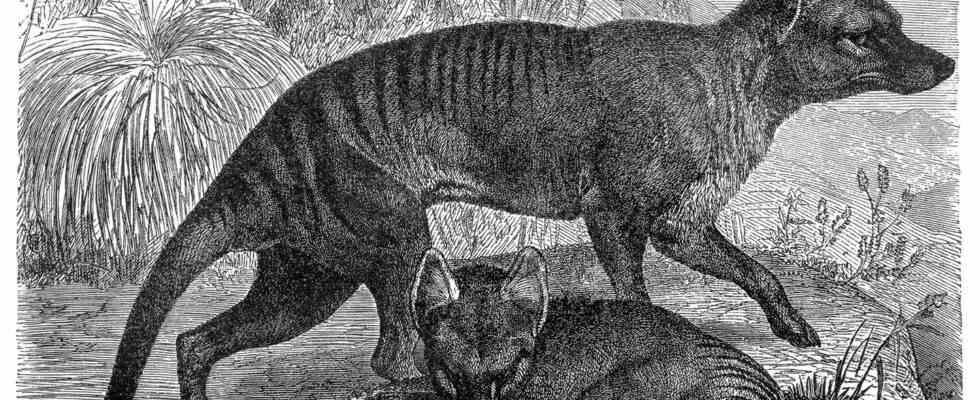Australia
Extinct thylacine: Scientists want to revive the Tasmanian tiger
The Tasmanian Tiger in a historical drawing
© Nastasic / Getty Images
The Tasmanian tiger, a thylacine from Australia, has been considered extinct since 1936. However, if some scientists have their way, that could soon change.
In 1936, the last Tasmanian tiger died in a zoo in Adelaide, Australia. The male named Benjamin is referred to by science as the so-called “Endling” – the last known representative of his species. Since then, the animal species has been considered extinct.
Occasionally people have reported sightings in the Australian wilderness, but this has never been proven (or photographed).
Tasmanian tigers were native to Australia. They were the last members of the thylacine family – like kangaroos, their young live in their mothers’ pouches for around three months. Outwardly, they look amazingly similar to dogs, although there is no relationship whatsoever. They feed on small animals, are persistent runners and pose no danger to humans or livestock.
The Tasmanian tiger is considered extinct
As Australia, home to many unique animal species, has struggled for decades with migrant species such as rabbits, special toads or foxes threatening native fauna, a healthy population of thylacines would be extremely helpful in maintaining the balance.
For this reason, a team led by scientist Stephen Frankenberg is planning to resurrect the extinct animal. However, the plan is complicated.
Because the closest relative of the Tasmanian tiger is a tiny animal of all things: the thick-tailed narrow-footed bag mouse. It looks like a miniature chinchilla, but is most closely related genetically to the extinct thylacine.

A thick-tailed narrow-footed pouch mouse. The animal is said to help revive the Tasmanian tiger.
© CC BY-SA 2.0 Bernard Dupont
According to the Washington Post, the scientists want to genetically modify the cell of a narrow-footed bag mouse and thus turn it into an artificially generated cell of a Tasmanian tiger, which will then grow into an embryo and ultimately be implanted in a larger marsupial such as a quoll. who then gives birth to the young.
Not everyone welcomes the plan
However, according to Frankenberg, it should take at least ten years before the first successful birth could take place.
Colleagues from the industry, on the other hand, doubt that the project is even practicable, some criticize him for the daring plan and compare the project with “Jurassic Park” – a film of which Frankenberg is actually a big fan. He remains confident. The next ten years will show whether they are right.
Source: “Washington Post”


